Until recently, one could easily be forgiven for standing in the middle of Katowice's market square and trying to find the market square. Following a thorough renovation, in 2016 the snazzy new Rynek 2.0 was reopened complete with a flowing river, deck chairs, benches, and a spattering of flowers beds and trees. Before the massive overhaul (and we mean massive!), Katowice’s ‘Rynek’ was basically a large traffic roundabout and tram stop surrounded by a faded collection of mismatched buildings in architectural styles that had mostly fallen out of favour, if they ever engendered any enthusiasm to begin with.
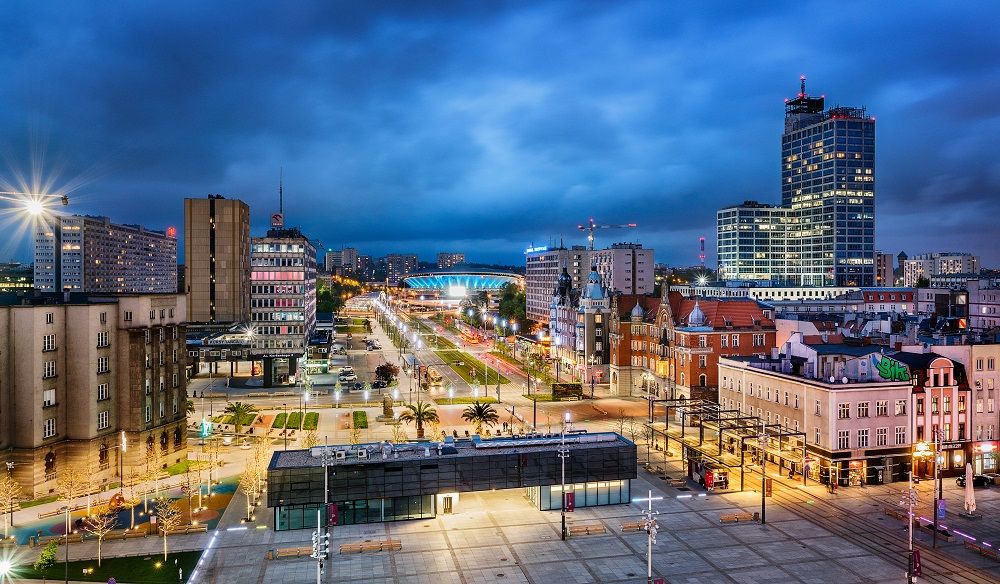
For years the city has known that turning its market square into, you know, an actual market square, would be a crucial step towards becoming a respectable Polish city. A plan to modernise and pedestrianise the Rynek was put in place as far back as 2008. The first step was modernising the Soviet-era monstrosity at ul. Młyńska that uglied up an entire block of the Rynek, before they elegantly transformed it into the new modern City Hall.
Today the Market Square is really three conjoined public squares, known separately as Plac Kwiatowy (Flower Square - featuring benches, wooden steps and flowershops), Plac Teatralny (Theatre Square - reserved as an open platform for large events like the city's Christmas market) and Plac Obrońców Katowic (Defenders of Katowice Square - home to the Katowice Scout monument). Between the latter two a modern two-story pavillion was built, behind which flows a small artificial river lined with potted palm trees. Public transport is still a key characteristic of the market square, with trams intersecting it and running in all directions. Topping it off, despite the fact that Katowice was not a medieval city, nor did it ever have defensive walls or guardsmen, the city now has its own hejnał (bugle call), which is played from the top of the handsome tenement building at the corner of Młyńska and Pocztowa streets each day at noon.


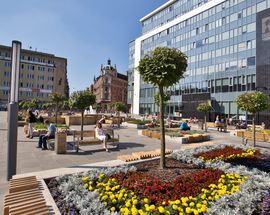
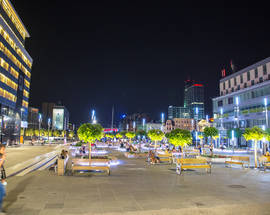

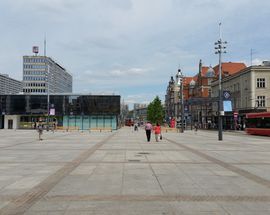
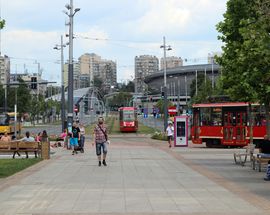
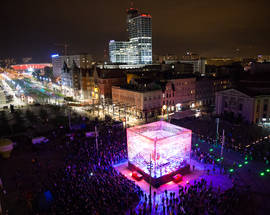

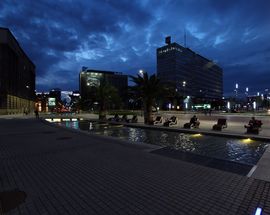
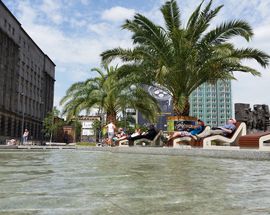

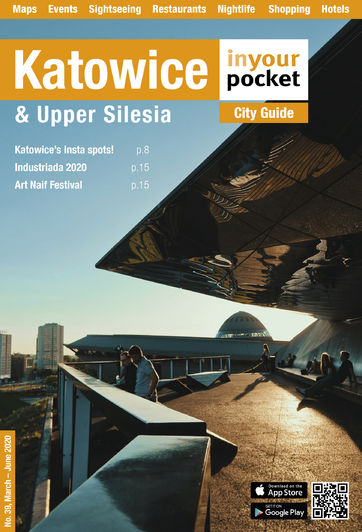
Comments